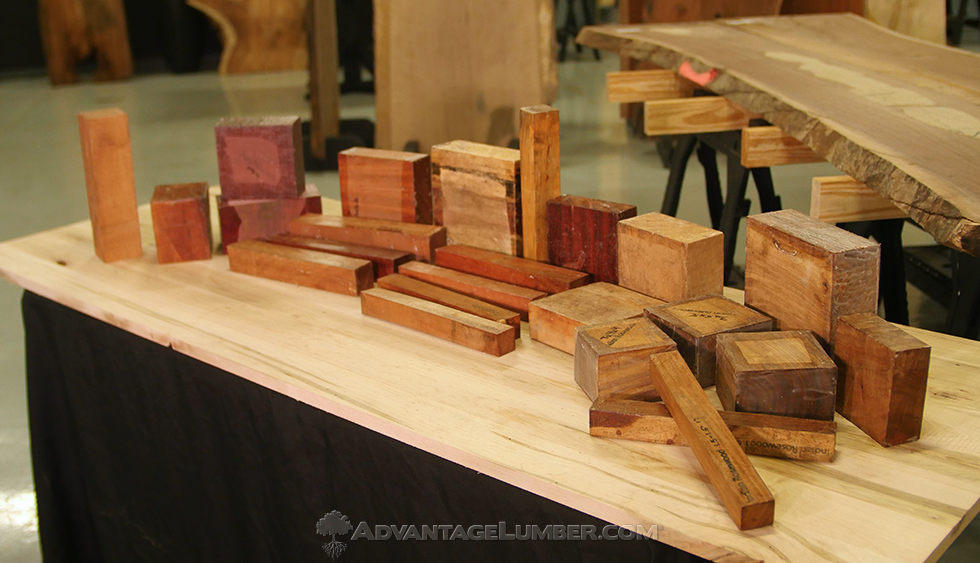- Scientific Name
- Millettia laurentii
- Common Name(s)
- Wenge
- Distribution
- Central Africa
- Average Dried Weight
- 54 lbs/ft3 (870 kg/m3)
- Specific Gravity
- Basic: 0.72, 12% MC: 0.87
- Janka Hardness
- 1,930 lbf (8,600 N)
- Modulus of Rupture
- 21,990 lbf/in2 (151.7 MPa)
- Elastic Modulus
- 2,550,000 lbf/in2 (17.59 GPa)
- Crushing Strength
- 11,710 lbf/in2 (80.7 MPa)
- Shrinkage
- Radial: 4.8%, Tangential: 8.1%,
- Appearance
- Heartwood is medium brown, sometimes with a reddish or yellowish hue, with nearly black streaks. Upon application of a wood finish (particularly an oil finish) the wood can become nearly black. However, unlike most other dark hardwoods, the heartwood of wenge can lighten (rather than darken) when exposed to sunlight.
- Texture
- Grain is straight, with a very coarse texture. Low natural luster.
- Rot Resistance
- Very durable; good termite resistance.
- Workability
- Can be difficult to work with hand and machine tools. Blunts tool edges. Sands unevenly due to differences in density between light and dark areas. Very splintery—care must be used when handling unfinished wood with bare hands as splinters can be very large and have an increased risk of infection. Very large pores can be difficult to fill if a perfectly smooth/level finish is desired.
- Odor
- Wenge has a faint, slightly bitter scent when being worked.
- Allergies/Toxicity
- Although severe reactions are quite uncommon, breathing wenge wood dust has been reported to cause central nervous system effects, abdominal cramps, irritation of the skin and eyes, and is also a sensitizer. Additionally, wenge splinters tend to take longer to heal and are more likely to go septic (get infected) than splinters from other woods.
- Pricing/Availability
- Available in wide boards and veneer sheets. Prices are high, and are likely to remain so as supplies dwindle.
- Sustainability
- This wood species is not listed in the CITES Appendices, but is on the IUCN Red List. It is listed as endangered due to a population reduction of over 50% in the past three generations, caused by a decline in its natural range, and exploitation.
- Common Uses
- Veneer, paneling, furniture, turned objects, and musical instruments.
- Comments
- Usually pronounced WHEN-gii or WHEN-ghay, this incredibly popular African hardwood has excellent strength and hardness properties, though it’s much more frequently used for its rich dark brown color, which can be dark enough to be used as a substitute for ebony (Diospyros spp.) in certain situations.


